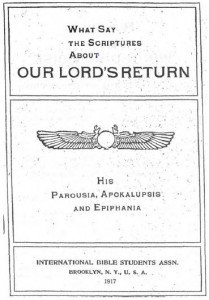 The King James Bible translation was great piece of work for its day but is it really the perfect infallible word of God for all time? I do not think so. Due to archeology and scholarship, we have gained a lot of knowledge about the ancient world since 1611 and modern Bibles reflect this much more accurate and informed scholarship. For example, the Masoretic text of the Old Testament dates to AD 1000 but today we have access to the Dead Sea Scrolls (with Old Testament fragments back to 200 BC) and thousands of Ugaritic and other texts that inform us about the context of the Old Testament. In 1611, this stuff was buried under ground. Translations like the ESV are far superior to the KJV because they reflect this new knowledge.
The King James Bible translation was great piece of work for its day but is it really the perfect infallible word of God for all time? I do not think so. Due to archeology and scholarship, we have gained a lot of knowledge about the ancient world since 1611 and modern Bibles reflect this much more accurate and informed scholarship. For example, the Masoretic text of the Old Testament dates to AD 1000 but today we have access to the Dead Sea Scrolls (with Old Testament fragments back to 200 BC) and thousands of Ugaritic and other texts that inform us about the context of the Old Testament. In 1611, this stuff was buried under ground. Translations like the ESV are far superior to the KJV because they reflect this new knowledge.
As far as the discussion concerning NT manuscripts, Dr. Dan Wallace has penned a fine essay here. What you will find is that the KJVonlyist arguments are very misleading and trade on fear. Studying church history reveals that scribes added things over time rather than taking them out. The verses KJVonly people claim have been removed are additions, usually by Catholic scribes. We want to study the inspired word not a medieval Catholic’s additions (as in the case of 1 John 5:7 KJV).
If you like the King James Bible and prefer to use it then I have no problem with that. This post is directed toward those KJV-only people who argue that God inspired the KJV translators to preserve a perfect inerrant translation of his word in 1611. This idea is easily disproved but persists with a cultist tenacity.
I joined a Facebook group called “King James Bible Debate” but I quickly discovered the members did not really want to debate. After the numerous pleasantries concerning me being a Jesuit plant were offered, I presented an argument that went unanswered… silence… and I mean crickets were chirping… a few red herrings and non sequiturs were proffered and, then I was hurriedly banned from the group ( I suppose for being Jesuit). It’s very revealing when a group must silence dissent in order to preserve the paradigm – it is how cults always operate. The argument that got me banned is as follows:
- The God of the Hebrews hates false gods (Judges 2:17; Jer. 14:22; 18:15).
- The Greek term pascha means ‘passover’ and the KJV translators rendered it as passover 28 times. “Now the feast of unleavened bread drew nigh, which is called the Passover.” (Lk 22:1, AV)
- However, they rendered the same exact same term as “Easter” in Acts 12. “And when he had apprehended him, he put him in prison, and delivered him to four quaternions of soldiers to keep him; intending after Easter to bring him forth to the people.”(Ac 12:4, AV)
- The English word “Easter” is derived from the name of an Anglo-Saxon goddess, Ēostre, a form of the widely attested Indo-European dawn goddess. Saint Bede the Venerable, an Anglo-Saxon theologian, historian, and chronologist, best known today for his Historia ecclesiastica gentis Anglorum recorded in the 8th century that it was it derived from Eostre, or Eostrae, the Anglo-Saxon goddess of Spring and fertility.
- The God of the Bible would never inspire a translator to name His holy feast day after a pagan goddess (Isaiah 42:8). This violates His character and holiness.
Therefore, the King James Bible is not a perfect inspired translation. This seems decisive enough to dismiss the central claim of the KJVonly cult but in light of a dispute over etymology I’ll offer one more argument that is similarly devastating to the “perfect translation” idea.
- When Luke wrote the book of Acts, he had an actual date and time in mind. There was no “Easter” celebration in Jerusalem in the AD 60s when Acts was composed. Luke meant the Jewish passover feast and it is well established that the early church celebrated Jesus resurrection during passover.
The paschal feast thus took place in the primitive Church at the same time as the Jewish Passover, that is, on the night of the 15th Nisan, and by the date rather than the day. The feast had, however, a very different character from the Jewish Passover, though without denying its derivation from this. [1]
- Due to replacement theology and anti-Semitism, the Council of Nicea defined Easter specifically so it was not on the date of the Jewish Passover. Constantine wrote:
- Thus, by definition Easter does not denote the date that the inspired author Luke intended.
And in the first place, it seemed very unworthy for us to keep this most sacred feast following the custom of the Jews, a people who have soiled their hands in a most terrible outrage, and have thus polluted their souls, and are now deservedly blind. Since we have cast aside their way of calculating the date of the festival, we can ensure that future generations can celebrate this observance at the more accurate time which we have kept from the first day of the passion until the present time…. — Emperor Constantine, following the Council of Nicaea [2]
Therefore, the KJV is not a perfect inspired translation.
When your belief system is hinged on something as precarious as absolute perfection from a group of fallible men, one counterexample implodes the house of cards.
The doctrine of biblical inerrancy applies to the original autographs written in Hebrew, Aramaic and Koine Greek. Although we do not have those originals, the science of textual criticism, as employed by Holy Spirit led scholars, gives a Greek New Testament text that we can confidently assess to be around 99% true to the originals in modern editions like the NA28. Translations are another matter. Some concepts in Hebrew and Greek do not translate to English directly, so no English translation is infallibly perfect, it is not even possible, because they all must compromise at points. But thanks to hard working scholars and archeologists, we have a very accurate rendering of the ancient text that we can trust for all maters of faith and doctrine.
[1] Gerhard Kittel, Geoffrey W. Bromiley, and Gerhard Friedrich, eds., Theological Dictionary of the New Testament (Grand Rapids, MI: Eerdmans, 1964–), 902.
[2] “Emperor Constantine to all churches concerning the date of Easter” http://www.fourthcentury.com/index.php/urkunde-26










